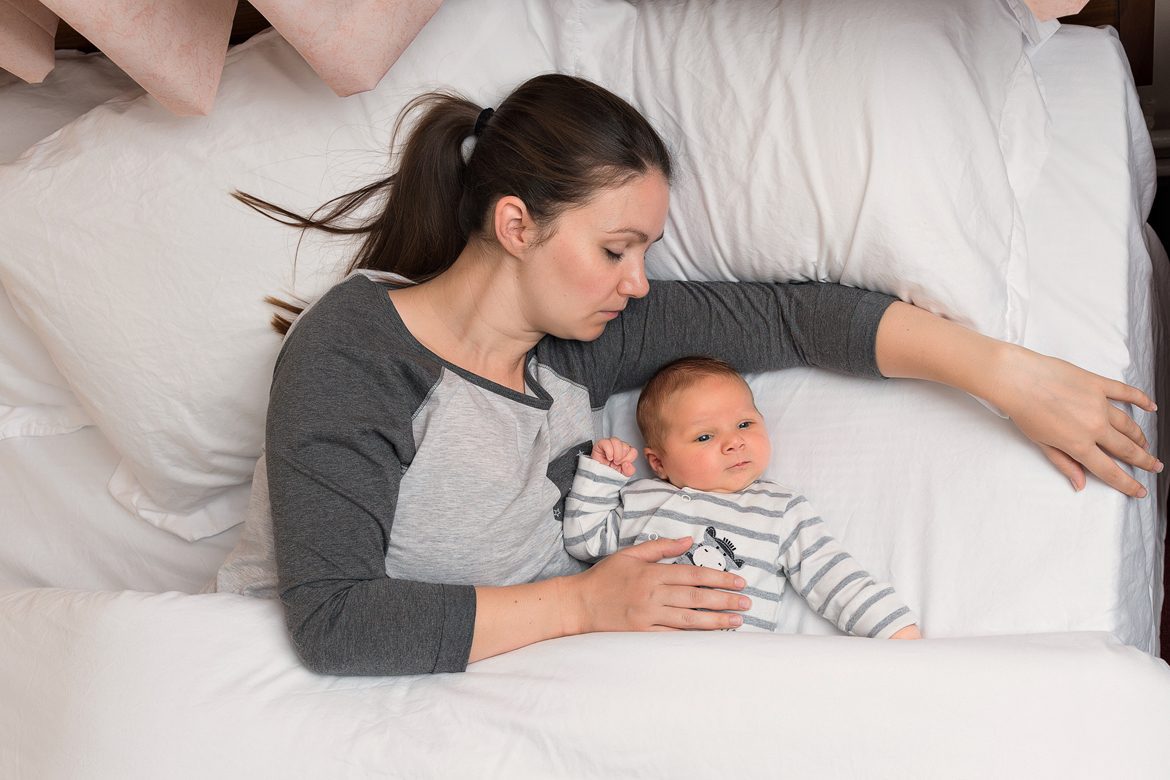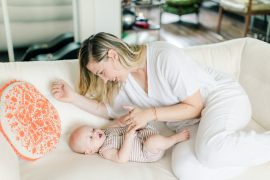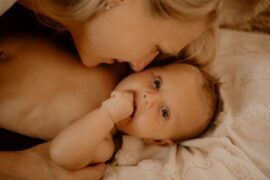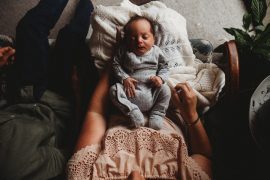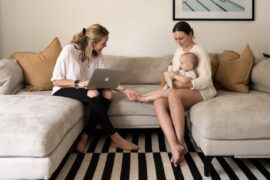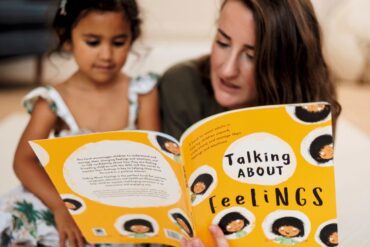By Mary Francell
Every few months it seems there’s another headline proclaiming “Cry-It-Out Doesn’t Hurt Babies” or “The Dangers of Co-Sleeping”. Doctors warn parents that their child will “never” leave their bed once they let the child sleep there. One public health campaign even compared bedsharing with putting a baby to bed with a butcher knife. All of this can be very upsetting and confusing for parents.
Babies instinctually want to do the natural thing – sleep with someone – and protest when they are put down alone. But Western culture promotes the belief that infants and toddlers “should” sleep alone and frightens parents into thinking that they will harm their children (physically and psychologically) by sharing a bed with them.
Is there any evidence of this? In a word, no – as long as it is done safely and in a biologically normal way (see the Safe Sleep Seven). But really, is that even the right question?
Leading sleep researcher, Dr. James McKenna, explains that many infant sleep studies are backwards, looking at cultural beliefs instead of scientific paradigms. They start with the assumption that solitary infant sleep is normal (it’s not). These studies usually ask “Is co-sleeping/bedsharing safe?”, or “Does sleep training reduce infant waking and crying?”, rather than “Is it healthy and safe for babies to sleep alone?”
In fact, McKenna believes that not asking the correct question resulted in a vast cultural experiment that contributed to many babies dying of Sudden Infant Death Syndrome (SIDS). In years past, the untested cultural belief that babies should sleep alone led to doctors telling parents to put infants down on their tummies so they would stay asleep longer. This resulted in huge spikes in SIDS rates that have since fallen with “back to sleep” campaigns.
Artificial (formula) feeding, which made it easier for baby nurses and others to care for infants as night, has also emerged as a major SIDS risk factor. Even solitary sleeping is no longer recommended – a parent’s breathing and other factors help prevent SIDS by stimulating the immature infant respiratory system.
Babies instinctually want to do the natural thing – sleep with someone – and protest when they are put down alone.
Biologically normal infant sleep components include breastfeeding, sleeping next to the mother and varied sleep positions including side and back. In traditional cultures, sharing sleep takes place on a firm surface, usually the floor (these cultures also have very low SIDS rates).
In Western societies, parents are told to keep infants in their rooms, but never in their beds. Yet, because babies are biologically programmed to seek human contact, warnings against bedsharing often lead to parents falling asleep with their infants on unsafe surfaces such as couches or recliners.
Infant sleeping on unsafe surfaces (which can also include hazards such as mattresses that don’t fit tightly in the frame) is often lumped together with other forms of co-sleeping and even bedsharing in many studies. Unsafe surfaces are also confused as a risk factor for SIDS, rather than for suffocation. But as McKenna and his colleague Lee Gettler note, “…(with) careful and complete examination of death scenes, the results revealed that 99% of bedsharing deaths could be explained by the presence of at least one and usually multiple independent risk factors… such as maternal smoking, prone infant sleep, use of alcohol and/or drugs by the bedsharing adults.”
The authors of Sweet Sleep researched this topic extensively and concluded that there is no greater risk of SIDS when infants under four months old bedshare safely (again, the Safe Sleep Seven) than when they sleep nearby in a crib. And why should there be? Sleep sharing is the biological norm for our species and evolution would have stopped it long ago if it wasn’t safe. Sweet Sleep also states that a baby over four months can safely bedshare with any responsible, sober, non-smoking adult.

